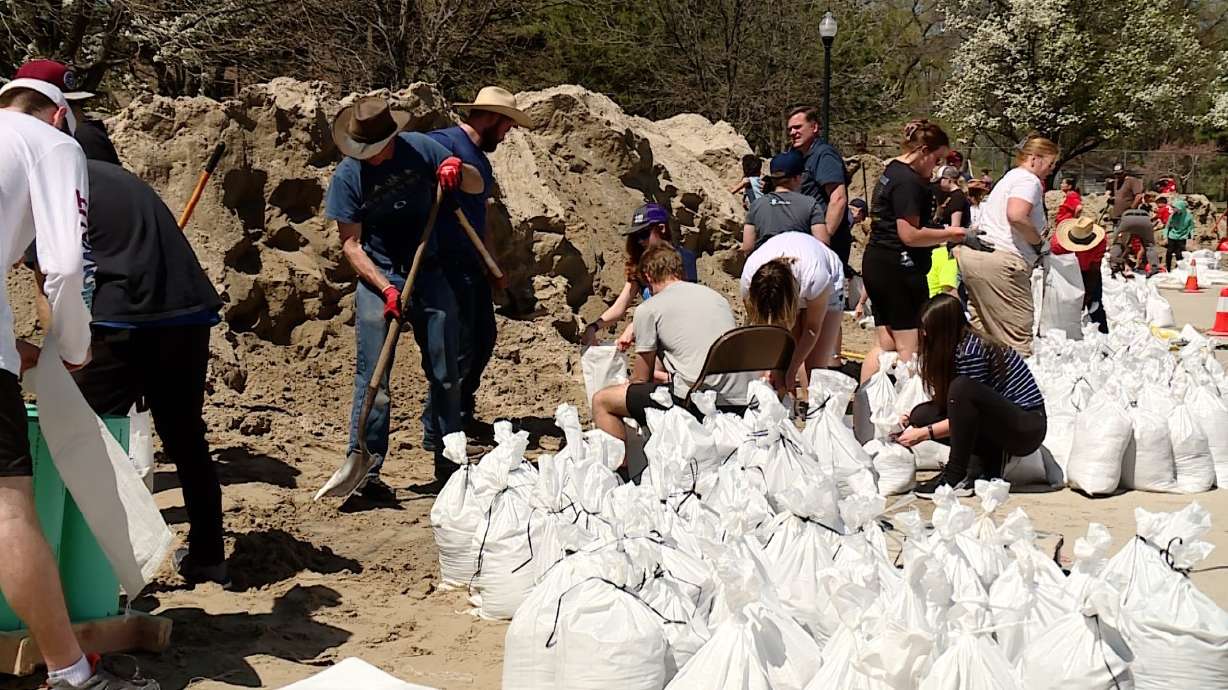Estimated read time: 3-4 minutes
This archived news story is available only for your personal, non-commercial use. Information in the story may be outdated or superseded by additional information. Reading or replaying the story in its archived form does not constitute a republication of the story.
SALT LAKE CITY — Local and state governments distributed millions of sandbags over the past few months as Utah's record snowpack rekindled fears of repeating widespread flooding in 1983, the last time the statewide snowpack reached as high as it did this year.
More than 2 million sandbags had been distributed by late April, according to KSL NewsRadio. But the state's streak of flood advisories ended at 40 days last week, marking an unofficial end to those flooding concerns without the same serious flooding as 40 years ago. There's less than an inch of the statewide snowpack left to melt at this point.
Local and state leaders are breathing a sigh of relief.
"(The snowmelt process) went really well compared to what we were worried about," said Katy Fleury, spokeswoman for the Salt Lake County Mayor's Office. "We're feeling really fortunate that it went as well as it did."
She told KSL.com Wednesday that three things really worked in Salt Lake County's favor. First, there is more flood-preventing infrastructure in the county, installed after the issues tied to the snowpack runoff in the 1980s. On top of that, crews conducted "around-the-clock" service to clear debris from creeks, streams and rivers, and then the weather "really cooperated" so that the snow didn't melt all at once as it essentially did in 1983.
So what happens next to all those sandbags?
Many local governments point out these sandbags become personal property once residents collect them. That's the case in Salt Lake County.
County officials point out that residents can save their dry sandbags for future use, though there are conditions the bags must be kept in to remain effective. Salt Lake County officials say polypropylene sandbags, which most cities use, last about eight months to a year after being exposed to direct UV sunlight but can last "almost indefinitely if protected from UV exposure." They add burlap sandbags eventually rot "if they are not covered or protected from the elements."
If you don't want to hang onto your sandbags, some local governments are now starting to go through the process of collecting all of them.
Salt Lake County officials announced Tuesday that they will set up eight sandbag dropoff locations where residents can return all their sandbags. The county distributed an estimated 350,000 to 500,000 sandbags this year, Fleury said.
The county's dropoff locations are:
Friday through July 1
- Salt Lake City, East Side: East end of the road to Big Pavilion at Sugar House Park (1330 E. 2100 South).
- South Salt Lake: 195 W. Oakland Ave.
- Millcreek: Southeast and southwest corners of the Big Cottonwood Regional Park (4300 S. 1300 East).
- Draper: Parking lot next to Corner Canyon High School stadium (12943 S. 700 East).
June 23 through July 15
- Salt Lake City, West Side: South end of parking lot at Rosewood Park (1400 North 1200 West).
- Murray: 481 E. Parkside Drive (near Murray Park).
- Cottonwood Heights: North end of the tennis court parking lot at Crestwood Park (1673 E. Siestra Drive).
- Sandy: Southwest portion of the UTA Park and Ride Lot (9400 S. 2000 East).
Morgan County officials told KSL-TV on Tuesday that crews will spend the next couple of weeks removing all the sandbags there, too.
The dirt and sand from sandbags are usually stored for future use or donated for various needs, such as gardening or development. In Morgan County's case, the sand will be sent to the Morgan County Fairgrounds, where it can be used either in its rodeo arena or repurposed for sand volleyball or other types of uses.
What residents shouldn't do is dump their sandbags into bodies of water, ditches, roadway gutters or storm drain inlets, Salt Lake County officials say. Unless directed by a city or hauler, residents also shouldn't dump them in curbside trash bins.
"That's going to create all sorts of problems," Fleury said.
Contributing: Andrew Adams









